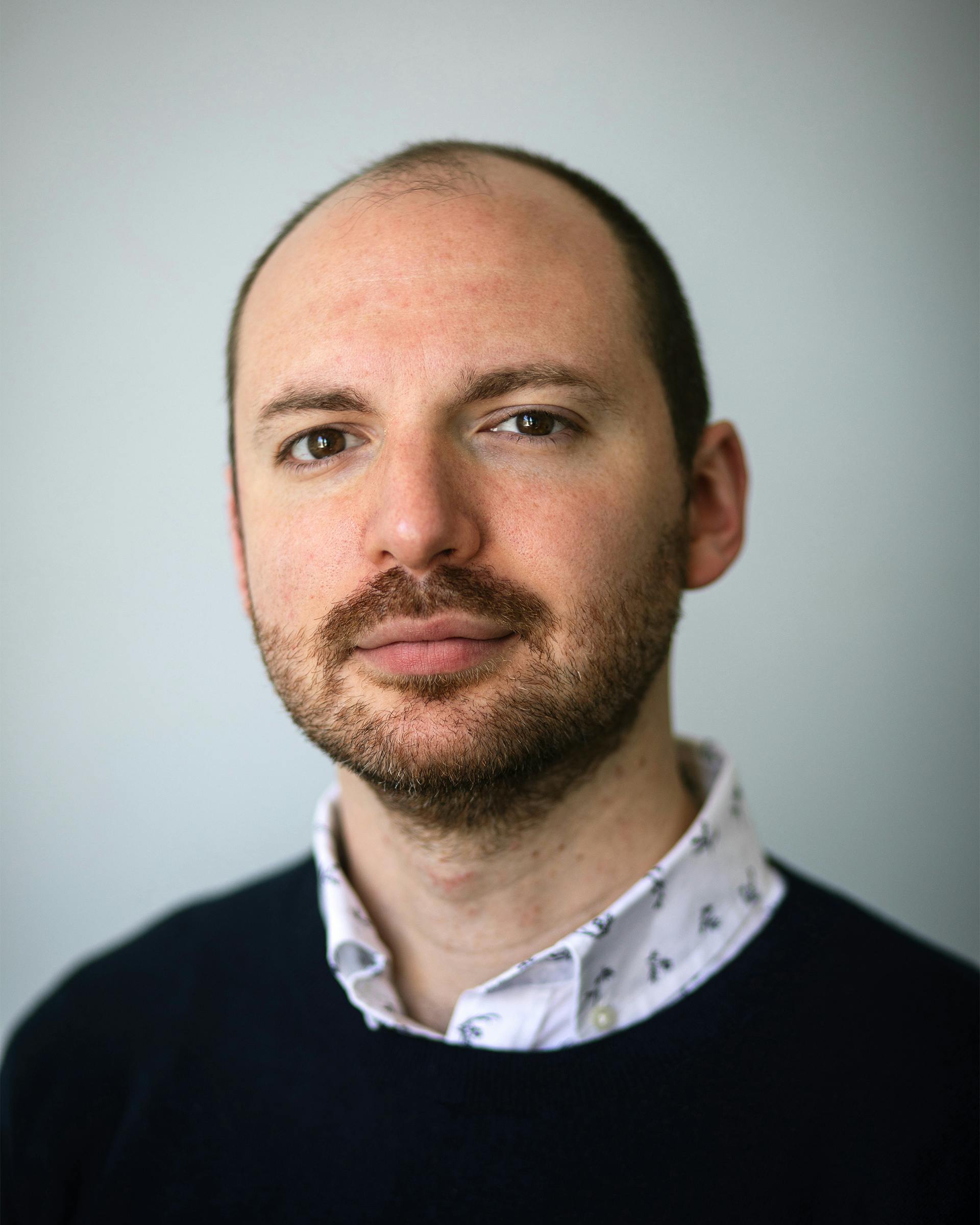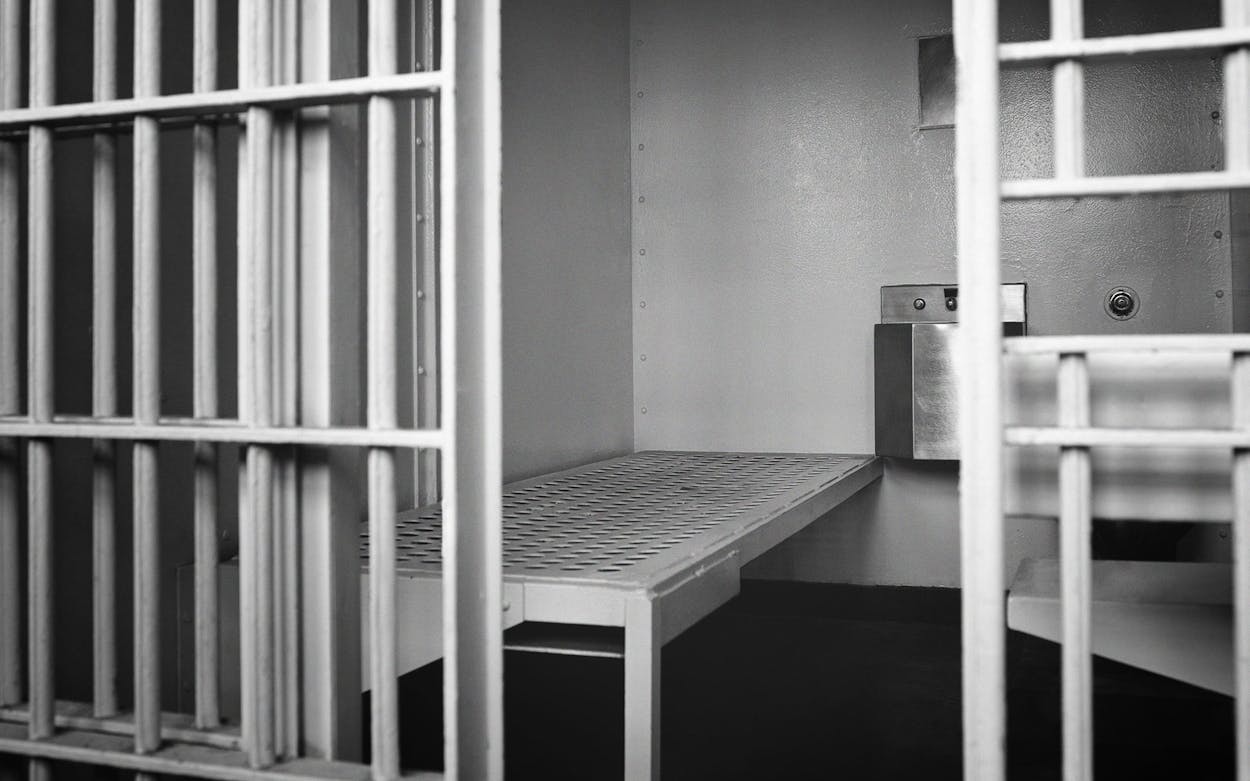On December 7, 1982, a convicted murderer named Charlie Brooks was killed at the Huntsville Unit in East Texas. It was Texas’s first execution in eighteen years—the U.S. Supreme Court had ruled the practice unconstitutional a decade earlier—and the nation’s first by lethal injection, a new method that was supposed to be less cruel than the electric chair. Watching in the witness room was Texas Monthly reporter Dick Reavis. As Maurice Chammah recounts in Let the Lord Sort Them: The Rise and Fall of the Death Penalty (Crown), his searing new history of the death penalty, Reavis made several trips to interview Brooks in Huntsville. “Brooks knew that he’d be subject to a new, untested method of execution, and he wanted the public to know whether it was really as ‘humane’ as promised,” Chammah writes. He and Reavis made a pact: if Brooks felt pain while he was dying, he’d shake his head from side to side.
During Brooks’s six years in prison, he converted to Islam, studied the law, and became a skilled chess player. He asked to play a final match on his last day, and prison staff scrambled to find a guard who was a worthy opponent (Brooks bested him in thirty minutes). Just past midnight, as a cocktail of three poisons flowed into his veins, he looked across the room at his girlfriend, Vanessa Sapp, and told her that he loved her. He said a prayer in Arabic. Then, Chammah writes, “tears came to his eyes as he began to turn his head from side to side.” Reavis later wrote that he wasn’t certain if Brooks was giving their agreed-upon sign. “He couldn’t be sure, and he began to silently panic.” It took seven minutes for Brooks to be pronounced dead, time during which he appeared to suffer—wheezing, trembling, and heaving on the gurney.

Chammah tells this harrowing story in the prologue to Let the Lord Sort Them, a devastating history of what the jacket copy calls “a particularly American institution.” An Austin-based reporter for the Marshall Project, Chammah argues that it’s also a particularly Texan institution—not only because Texas has put far more people to death than any other state, but because the death penalty is deeply interwoven with the state’s history of racial violence. “Before executions looked like quiet medical procedures, they looked like charred and dismembered corpses, usually of Black men, surrounded by throngs of smiling white faces in the courthouse square,” he writes.
Much of the book is difficult to read, but that’s the point. Let the Lord Sort Them urges readers to reckon with the ugliest aspects of Texas history, and with how the political debate over the death penalty has elided the long-lasting trauma that executions inflict on everyone involved. That emotional toll, as Chammah shows in cinematic detail, radiates outward from the condemned person and their victim to the victim’s family; the prisoner’s family; the chaplains who walk men and, rarely, women to their deaths; and the attorneys, judges, and jurors who send them there. “To everyone else, the death penalty can feel like an abstraction, a source of dinner table quarrels,” he writes—but it is also a form of violence, and one that he argues convincingly is fading away. He spoke with Texas Monthly about why the state, and Houston in particular, became the epicenter of the death penalty, and why that’s changing.
Texas Monthly: Readers may know that Texas executes many more people than other states do. But you also argue that the death penalty is seen as part of the Texas myth and the idea of frontier justice. Why is that connection important?
Maurice Chammah: I knew that there was a data-driven explanation for Texas being the epicenter of the death penalty. You know that we have roughly a third of the fifteen hundred executions in the country, and that we had a uniquely harsh law that allowed a sort of conveyor belt to be set up. But when I interviewed people and asked them why are we the epicenter, I’d hear these explanations that reference the frontier. People would say, “Oh, well, it’s just the good old way of doing things in Texas. We’ve been doing it since time immemorial.”
 In the 1973 Texas Legislature, when lawmakers were debating bringing the death penalty back, you had this one lawyer who was defending the death penalty to them and saying it was needed in Texas, because we have this culture where we’re more violent, and we need this more violent response to crime in order to deter people. I recognized this man’s last name to be Arabic, and I’ve studied Arabic. I was like, who is this guy? It turns out it was Fred Semaan, an attorney whose father had come to the United States from Syria. So you have this man talking about this sort of deep Texas culture that we’ve all been steeped in for generations—and yet he’s a [son of an] immigrant. It suggested to me that there’s a difference between the reality of our history and the kind of myths that we attach to it.
In the 1973 Texas Legislature, when lawmakers were debating bringing the death penalty back, you had this one lawyer who was defending the death penalty to them and saying it was needed in Texas, because we have this culture where we’re more violent, and we need this more violent response to crime in order to deter people. I recognized this man’s last name to be Arabic, and I’ve studied Arabic. I was like, who is this guy? It turns out it was Fred Semaan, an attorney whose father had come to the United States from Syria. So you have this man talking about this sort of deep Texas culture that we’ve all been steeped in for generations—and yet he’s a [son of an] immigrant. It suggested to me that there’s a difference between the reality of our history and the kind of myths that we attach to it.
I also wanted to get at the way in which we in Texas are able to spend less time talking about lynching and race. I think there’s a lot of Texans who say, “Well, the Deep South had all these Jim Crow lynchings in Alabama and Mississippi”—but Texas, East Texas particularly, had [many]. And that forms the prehistory to the contemporary death penalty. I think that when people in Texas think about the death penalty, they associate it more with frontier hangings of cowboys rather than Jim Crow racial inequality and lynchings.
TM: Is that mythology just a smokescreen for racism?
MC: Yeah. It’s a way to let ourselves off the hook as white Americans. That’s part of why I wanted to spend so much time on this one lawyer in the book, Danalynn Recer, who came to defense work after having studied the history of lynchings. And she very memorably said to me once, “I realized the history of lynchings is the history of what the hell is wrong with white people.” White Texans have this myth that essentially lets them not look race in the face.
TM: Can you talk more about the history of racial violence in Texas, and why we should view the death penalty in that context? You note that in some cases, Texas prisons are built atop land that used to be plantations.
MC: Many Texas prisons are on land that was previously slave plantations, and many of the people who are incarcerated in these prisons are the descendants of people who were enslaved there. After the Civil War, as white Texans tried to reassert control over the newly freed Black population, one of the primary ways they did that was through lynchings. The point of lynchings was that they happened in public. And slowly, over time, in the nineteen-twenties and thirties, you can see elite Texans and politicians start to feel a little bit ashamed, and also [worried that] the bloodthirstiness of Texas culture is going to kind of scare off outsiders. Business leaders were uncomfortable with these mob executions. So they started encouraging executions to happen behind closed doors, behind prison walls, as hangings.
I think a similar process happens in the nineteen-seventies and eighties, where we start to see even the closed-door electrocutions as a little too upsetting and spectacular. There’s a Texas legislator who in 1977 said the problem with electrocutions is that it becomes a circus sideshow, which to me evokes lynchings. And so in the nineteen-seventies, we see a slide to the new era of lethal injection, where it’s even more behind closed doors, and it’s even easier to say this isn’t about race. It just becomes quieter and quieter until you can barely hear the racial elements of the situation.
TM: But they’re still there. In the book you cite a statistic that nationwide, defendants of any race were four times more likely to get the death penalty if their victim was white—and that number was even higher in Texas.
MC: It’s interesting that it’s a little sideways, that it’s not about the race of the defendant so much as it’s about the race of the victim. You know, it’s awfully tricky to talk about race because the death penalty disproportionately affects Black people, but there have been many, many white people sentenced to death. It’s hard to draw very clear lines of saying that the death penalty is purely a racist institution. The real world is always messier than that. But you end up having this harsher, more debilitating justice system that falls along lines of class for poorer Americans. And that ends up affecting plenty of white people, but disproportionately Black Americans.
TM: You write that by 2013, Harris County was executing far more people than any non-Texas state, with twice as many executions as Dallas County, which was number two in the nation. What made Houston so different?
MC: Individuals matter, but institutions matter a lot. So much about Houston’s role at the epicenter of the death penalty was about the district attorney’s office. The Harris County DA’s office had a culture of seeking the death penalty much more often than comparable offices in San Antonio, Dallas, and Austin. For many years that office was led by Johnny Holmes, who made a kind of code of personal responsibility the leading line of his political tenure. He had a handlebar mustache and seemed like he was out of the Old West. People kept voting him in, because he was very good at projecting the idea that he was keeping everybody safer as Houston saw a boom in crime. Part of the story is that [in the eighties and nineties], Houston had a huge surge in population and it became the fourth-largest city in the country. And with that came a rise in crime.
Another reason is that [Harris County] had a big tax base—it could actually afford to seek the death penalty. Whereas if you committed the same murder just on the other side of the county line, it would be likely that the district attorney there would say, “This man deserves the death penalty, but we just don’t have the million dollars that it’s going to cost for all those experts and for all those investigative resources to make a death sentence happen.” That piece of the Houston story is a little bit underreported, but it’s super important.
Another important part is that Houston, as a big, conservative city in the Sunbelt, tracked with the rise of Nixon and Reagan and sunbelt conservatism to end up at the center of the victims’ rights movement. The death penalty came to be seen almost as a public service for victims. Over time, victims’ family members became quite politically influential. Their endorsements would matter in city council and mayoral elections, and even at the state Legislature.
TM: The cost thing is so interesting. You cite many reasons for the death penalty’s decline, from the rise of DNA evidence to the end of the tough-on-crime era, but readers may not know that the high cost of the trials was crippling in small counties—one had to raise taxes by twelve percent to pay for a trial. I guess that’s a bipartisan reason.
MC: Especially in Texas, which is a state that really values fiscal conservatism. I remember listening to a recording of these DAs from small towns who went to the Legislature in 2005 and were basically begging them to pass a life without parole law because they said, “Look, we can’t afford death sentences anymore.”
And then you had prosecutors from Houston saying, “Whoa, if we do this, we are going to, you know, kill off the death penalty inadvertently.” And in the end, that is kind of what happens. Once life without parole sentences were available, they were used more and more often—vastly more often than death sentences, everywhere across the country and especially in Texas. It’s a kind of devil’s bargain story in terms of the decline of the death penalty, because it’s contributed to much more bloated prisons and much higher costs than the death penalty.
In Jasper, Texas, a Black man was essentially lynched by three white supremacists. It was an international news story. But ultimately, this tiny town had to shoulder the tax burden of actually sending these three men to prison or to death row. And it was one of the cases that prosecutors mentioned to me as a cautionary tale. That town was broken by the tax burden of these death sentences. [The cost argument] makes for a bipartisan consensus. It also allows people to oppose the death penalty without getting into sticky moral and theological questions.
TM: Elsa Alcala, a former Texas prosecutor and judge who sought death sentences and is now a death penalty critic, is a vivid character in the book. I wondered if part of why you chose to focus on her is because her evolution on the issue mirrors that of the nation.
MC: That’s exactly why. When I first conceived of the book, the original concept was that it would be Elsa Alcala and Danalynn Recer as these two female lawyers whose career arcs could draw out the different aspects of the death penalty’s rise and fall. And I felt that Danalynn, who was a zealous public defender, that many readers would find her inspiring, but they wouldn’t necessarily feel like they could put themselves in her shoes because she was such a self-described outsider.
I found Elsa so riveting because she seems like the kind of political figure that Texas used to want to create on both sides of the aisle—a young woman who escapes poverty and a very difficult home life to have a storied career at the highest levels of justice, and then she comes to feel not just that the death penalty was wrong, but that the whole criminal justice system was ruining lives.
Once, her life story could have been a talking point for why we should judge people harshly, because they’re in control of their destinies, like she was. But now, it seems like the tough start she had in life is almost a basis for sympathy toward those whose lives were shaped by poverty and trauma and end up on the wrong side of the law. I found that arc not only telling about death penalty, but also telling about the big political shifts Texas has experienced.
TM: Do you think we’ll see the end of the death penalty in our lifetimes?
MC: I don’t know if we’ll see the end, but I think we will see the death penalty decline to a point where it seems irrelevant to our politics and our daily life.
Texas has had some mass shootings. I could imagine a future in which there’s maybe one execution a year, and it’s one of those cases. And, you know, people debate about it, but it doesn’t pervade our culture and political conversation nearly as much as it used to. We’re already seeing the beginning of that. President Biden came out against it during the presidential campaign and it didn’t register as controversial, which to me was a seismic change. And Trump supported it, but he barely talked about it.
TM: It’s not the lightning rod that it was in the nineties.
MC: Yeah. One thing I often felt like I was explaining to people my age, people in their thirties, is that the death penalty used to be up there with gun control and abortion as a signature culture war issue. There was a story that has always stuck with me about [former Republican state senator and land commissioner] Jerry Patterson, a longtime Texas politician. He told me that in the early nineties, whenever he would meet a regular citizen who didn’t know what to ask him, their gut instinct question was “Do you support the death penalty?” And now it’s impossible to imagine anybody voting primarily on or even solely on that issue. Climate change has come to the fore. Already, it feels like the death penalty has lost its place in the culture war pantheon.
This interview has been edited for length and clarity.
- More About:
- Books
- Death Penalty
- Huntsville
- Austin








